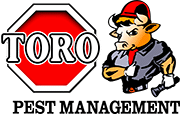Mice, often viewed solely as pests within our homes and communities, play a significant role in the natural ecosystem. Their presence is a testament to the complex interdependence of species and the environment. Understanding the ecological role of mice can shed light on the broader importance of biodiversity and the nuanced approach required for effective pest management.
Mice as a Keystone Species
Mice serve as a keystone species in many ecosystems, including those in South Florida. As one of the primary food sources for a variety of predators, such as snakes, birds of prey, and even larger mammals, mice are integral to maintaining the balance of predator-prey relationships. Their activities help regulate the populations of other species, ensuring a stable and functional ecosystem.
Seed Dispersal and Plant Regeneration
Mice contribute to the health of ecosystems through their roles in seed dispersal. By collecting and storing seeds in their burrows, they inadvertently facilitate the spread of various plant species. Some seeds will germinate in or near the burrows, leading to new plant growth and aiding in habitat regeneration and diversity. This process is crucial for the maintenance of healthy and resilient ecosystems.
Soil Aeration and Nutrient Cycling
The digging habits of mice play a crucial role in soil aeration and nutrient cycling. As they create burrows and tunnels, mice aerate the soil, improving its structure and the ability of water and oxygen to penetrate it. This activity enhances soil health and promotes the decomposition of organic matter, contributing to a more nutrient-rich environment for plant growth.
The Challenge of Pest Management
While the ecological benefits of mice are clear, their role as pests in human environments cannot be overlooked. Mice can cause significant damage to crops, property, and can even pose health risks through the diseases they may carry. The challenge lies in managing mouse populations in a way that minimizes their impact on human activities while preserving their positive contributions to the ecosystem.
Integrated Pest Management (IPM)
Integrated Pest Management (IPM) offers a solution to the challenge of balancing pest control with environmental conservation. IPM involves a combination of strategies designed to manage pest populations effectively and sustainably. These strategies include habitat modification, biological control, use of resistant plant varieties, and, when necessary, the judicious use of chemical controls.
IPM emphasizes the importance of understanding the ecological role of pests and using that knowledge to implement control measures that are effective, economical, and environmentally friendly. By focusing on long-term prevention and minimal impact on non-target species and the environment, IPM aims to maintain the delicate balance of our ecosystems.
Mice, despite their reputation as nuisances, are crucial components of the ecosystem, contributing to biodiversity, plant regeneration, and soil health. Recognizing their ecological role can help guide more informed and sustainable approaches to pest management. By adopting strategies that respect the balance of nature, we can address the challenges posed by mice in human environments while preserving the vital functions they serve in the natural world.



